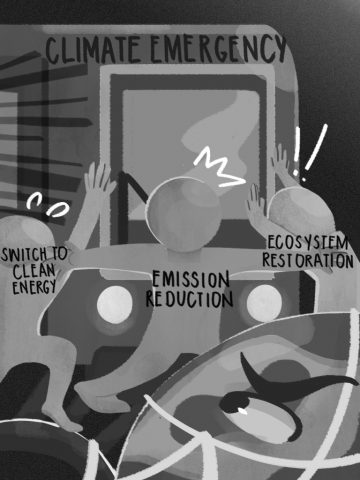The United Nations Climate Change Conference, an annual summit that brings together nearly 200 countries to deliberate and commit to measures that will help in the fight against climate change, held its 26th Conference of Parties (COP26) in Glasgow from October 31 to November 12.

This year’s main achievements were the signing of the Glasgow Climate Pact—which finalized the Paris Agreement Rulebook, the agreement made in 2015 during COP21 in Paris—and concretizing pledges from numerous countries on deforestation, coal use, renewables, among others. Although the overall goal of COP26 is to limit global warming to 1.5 degrees Celsius and set up a system that will cut half the amount of emissions by the next decade, it will fall short of doing just that. Should they accomplish this goal, reaching net-zero or carbon neutrality by 2050 would be achievable
With these goals in mind, it’s almost a given that financial resources will be spent. But with more loans, grants, and investments taken out under the mask of shifting to clean energy and solving climate change, more doubts arise on whether or not these resources would be utilized appropriately.
Furthermore, COP26 opened conversations on emission reduction, ecosystem restoration, the switch to clean energy, and conflict and issue resolution of injustices associated with the climate emergency. But these are the same things that they talked about during the 2015 Paris Climate Accords. It’s as if there is more movement in the warming of the climate than the development of our nations’ pledges.
What’s worse, the conference, instead of providing a stage to highlight actions needed to address the climate emergency, simply became a catch up event for world leaders.
Such misplaced focus will not help to curb warming due to climate change to below two and preferably 1.5 degrees Celsius by the end of the century.
Projections by the Climate Action Tracker (CAT) even show that that target most likely won’t be met. According to the CAT’s report on COP26, the world is headed towards 2.7 degrees Celsius of warming by the end of the century without current pre-COP26 interventions—a figure brought down to 2.4 degrees Celsius if only 2030 targets are met, and further to 2.1 degrees Celsius if all pledges and targets are met.
Even in the most optimistic scenario, warming will only be curbed to 1.8 degrees Celsius by the end of the century, a far cry from the 1.5 degrees Celsius target envisioned by the summit. In fact, to reach this 1.5 degree Celsius warming target, humanity needs to reduce its greenhouse gas emissions by nearly 27 gigatons; COP26’s grandstanding will only reduce emissions by a paltry six gigatons in comparison. This gap between reality and the ambitions of COP26 demonstrates that more action is still desperately needed.
Now, where do we go from here?
We need actualized long-term and near-term solutions to problems that 7.9 billion people around the world are experiencing instead of pledges that bear no fruit. Addressing the climate crisis requires constant work, not a conference that happens annually to make leaders look good. It is crucial that countries work as soon as possible toward their climate goals through imposing carbon taxes, halting the construction of new fossil fuel infrastructures, scaling back on fossil fuel subsidies, investing in renewables and nuclear energy, and improving on sustainability.
Implementing policies such as these will not only help curb climate change but also make the planet and the people living in it healthier with cleaner air and energy, creating a much safer environment for all.
Along with the agreements made during the conference, the global population needs to follow suit in what their countries had committed to. Saving the world is not only the job of the governments, but the job of all.
Without wide scale, comprehensive, and effective action on climate change in the near future, we risk making the Earth inhospitable for ourselves and for generations to come. We need to make progress—not by 2030, not by next year, but now.
